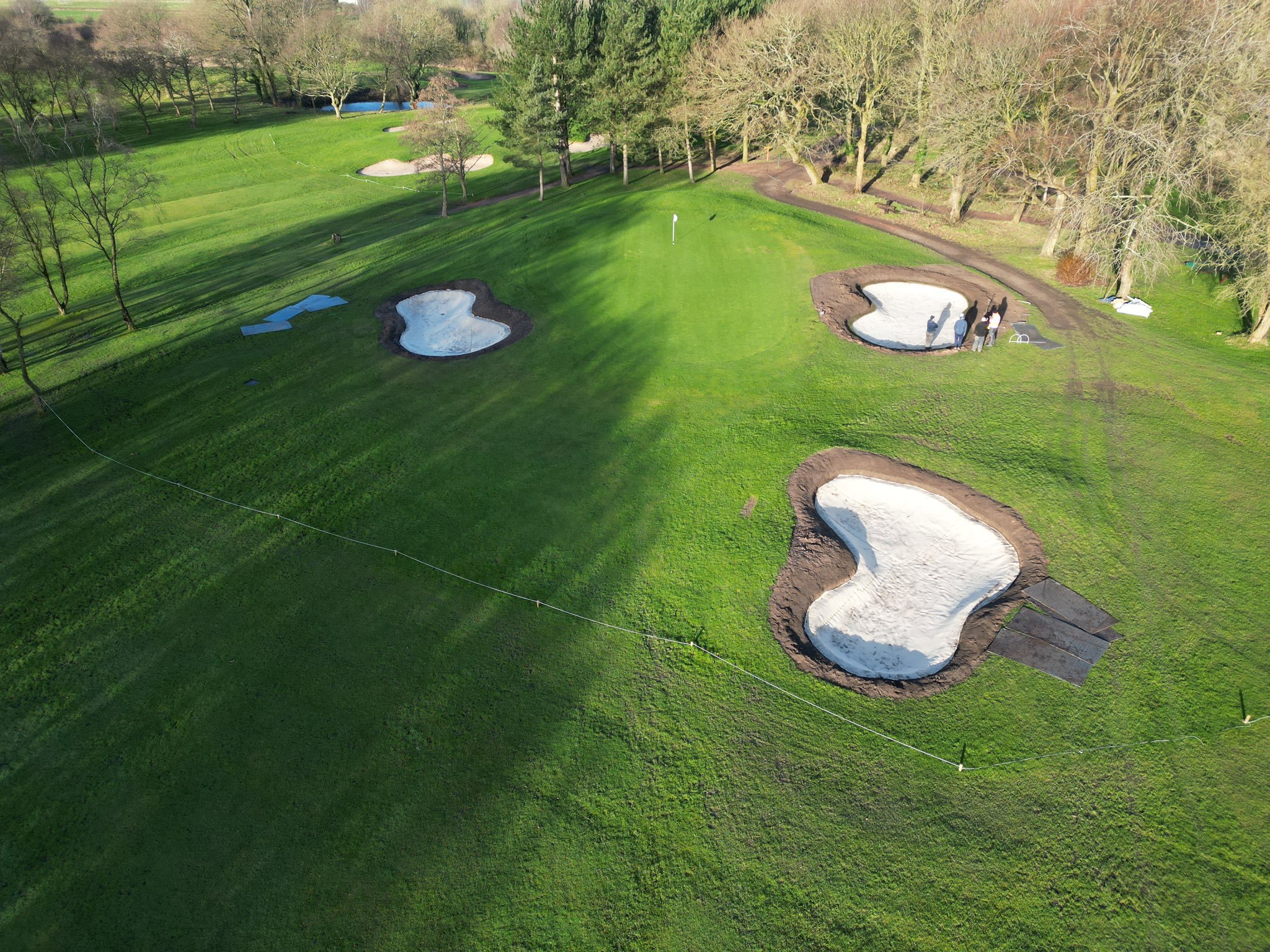Course Update - February 2024
Course Update
Hi everyone,
The broken record about how much it is raining continues to be played unfortunately. Another soggy month of February has followed the previous 7 months, and we will have to wait until March until a cold spell will probably halt the continued rainfall. Just looking at the rainfall figures hurts my head and we must look forward to brighter, longer days where the sun will shine. From October to January, we have had only 41 days without rain and February so far has only dealt us 5 dry days. You can read an article from the R&A about golf courses and how they cope with such weather HERE.
During this mild spell we have experienced some growth around the course, which again is frustrating as we can’t put the large mowers out there to cut it. We are able to use hand mowers to cut greens and tees, and we have also used a rotary hand mower to try and cut some green banks. This will help us to present the course better as soon as we are able to use the large-scale machinery.
Amazing what a little bit of sun can beckon out!
The greens are scarred from the disease that struck them in November, another frustrating time when we were unable to drive the sprayer round. To combat this, we are inputting new seed into the old scars, as well as topdressing the greens to aid smoothness.
Now the subject of organic matter removal has come up a lot recently at the club and so I just wanted to assure members that we will always be monitoring these levels and carrying out the necessary works, when conditions are right to do so. Hollow coring has been carried out here traditionally over the years and can be an effective way to remove unwanted thatchy material. However over recent years it has gone a little out of fashion as new technologies, machinery, products, and methods have changed in the industry. Many people now are choosing to deep scarify greens rather than core for several reasons.
Firstly, recovery time. The last thing most golfers want to see is the greens being ripped up as it affects ball roll, trueness, and speed. However it is a necessary maintenance task, as we want the best surfaces as possible. Removing large amounts of material needs to be refilled with new more free-draining dressing and conditions needs to be perfect for that to be the case. On a normal machinery setting with nice square patterned hole spacings, we would look to take out around 5% of material from one hollow coring procedure. Depending on weather conditions, air and soil temperatures, recovery could be very slow, especially in the cold spring, just as the season is starting. With scarification, we look to target 7-10% of thatch removal in one pass. This method is also quicker to recover and more golfer friendly for playing on surfaces straightaway. We also use products to help with thatch reduction, biology to eat the thatch, and provide more air space in the profile for the roots to grow.
Having said this, we will keep the art of hollow coring in are armoury and use it when we feel it is right to do so. But our soil test results show that the days of having to deep hollow core with large scale tines, followed by tens of tons of sand to infill the holes right to the top are over. Thatch levels are really focussed in the top of our profiles and that is where we will concentrate our work to minimise the amount of thatch which is created. It is natural over this last seven months that any golf course would have raised their thatch levels a bit, due to the lack of available windows to carry out such removal work.
We are also organising a demonstration of the GreenTek Dyna-Corer cassettes. These cassettes fit on to existing greens mowers and rather than a cutting cylinder, they have small hollow corers on them. These would most likely be used as a ‘little and often’ approach, and they would be good to try out on our greens when conditions improve. So, we will continue to work on the greens with a long-term strategy for improvements.
The bunker work continues when the weather has allowed, and all the newly shaped bunkers have had their edging work done. More turf is expected next week, and we will complete this area of work as soon as possible. All the staff are working hard and we will continue to carry out as much of the remaining winter work as we possibly can.
Steve
Head Greenkeeper



